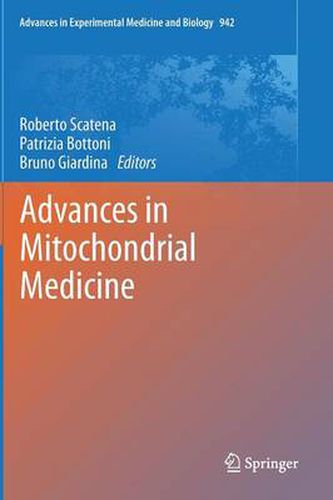Readings Newsletter
Become a Readings Member to make your shopping experience even easier.
Sign in or sign up for free!
You’re not far away from qualifying for FREE standard shipping within Australia
You’ve qualified for FREE standard shipping within Australia
The cart is loading…






This title is printed to order. This book may have been self-published. If so, we cannot guarantee the quality of the content. In the main most books will have gone through the editing process however some may not. We therefore suggest that you be aware of this before ordering this book. If in doubt check either the author or publisher’s details as we are unable to accept any returns unless they are faulty. Please contact us if you have any questions.
Mitochondria are far more than the powerhouse of the cell as they have classically been described. In fact, mitochondria biological activities have progressively expanded to include not only various bioenergetic processes but also important biosynthetic pathways, calcium homeostasis and thermogenesis, cell death by apoptosis, several different signal transduction pathways mainly related to redox control of gene expression and so on. This functional and structural complexity may undergo important derangements so to justify the definition of ‘mitochondrial medicine’, which should include all the clinical consequences of congenital or acquired mitochondrial dysfunctions. There are actually a growing number of studies which assign a significant pathogenic role to damaged mitochondria in different diseases: ischemia/reperfusion injury, neurodegenerative diseases, cancer with its dramatic sequelae (i.e, metastasis), metabolic syndrome, hyperlipidemias, just to mention a few of the most important pathologies. In this context, a further aspect that should not be disregarded is the interaction of pharmacological agents with mitochondria, not only in regard of the toxicological aspects but, above all, of the potential therapeutic applications. In fact, it is interesting to note that, while the properties of different so-called mitoxicants are well-known, the subtle linkages between drugs and mitochondria is still in need of a real pharmacological and therapeutic control at the clinical level. This lack of consideration can often lead to an underestimation of unwanted toxic effects but also of desirable therapeutic activities. A reevaluation of the potential clinical role of mitochondria could give a new light on some yet obscure aspects of human pathophysiology.
$9.00 standard shipping within Australia
FREE standard shipping within Australia for orders over $100.00
Express & International shipping calculated at checkout
This title is printed to order. This book may have been self-published. If so, we cannot guarantee the quality of the content. In the main most books will have gone through the editing process however some may not. We therefore suggest that you be aware of this before ordering this book. If in doubt check either the author or publisher’s details as we are unable to accept any returns unless they are faulty. Please contact us if you have any questions.
Mitochondria are far more than the powerhouse of the cell as they have classically been described. In fact, mitochondria biological activities have progressively expanded to include not only various bioenergetic processes but also important biosynthetic pathways, calcium homeostasis and thermogenesis, cell death by apoptosis, several different signal transduction pathways mainly related to redox control of gene expression and so on. This functional and structural complexity may undergo important derangements so to justify the definition of ‘mitochondrial medicine’, which should include all the clinical consequences of congenital or acquired mitochondrial dysfunctions. There are actually a growing number of studies which assign a significant pathogenic role to damaged mitochondria in different diseases: ischemia/reperfusion injury, neurodegenerative diseases, cancer with its dramatic sequelae (i.e, metastasis), metabolic syndrome, hyperlipidemias, just to mention a few of the most important pathologies. In this context, a further aspect that should not be disregarded is the interaction of pharmacological agents with mitochondria, not only in regard of the toxicological aspects but, above all, of the potential therapeutic applications. In fact, it is interesting to note that, while the properties of different so-called mitoxicants are well-known, the subtle linkages between drugs and mitochondria is still in need of a real pharmacological and therapeutic control at the clinical level. This lack of consideration can often lead to an underestimation of unwanted toxic effects but also of desirable therapeutic activities. A reevaluation of the potential clinical role of mitochondria could give a new light on some yet obscure aspects of human pathophysiology.